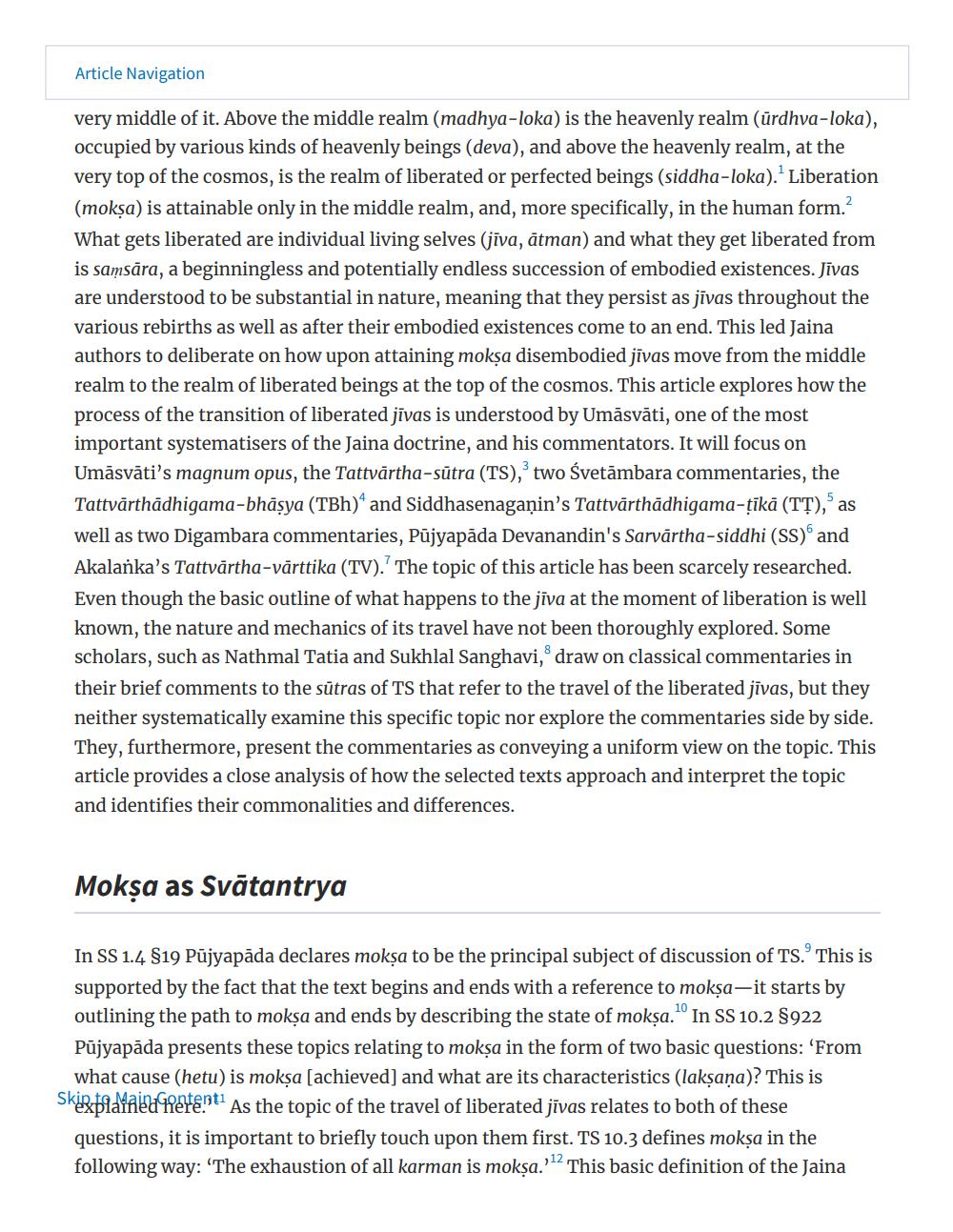Book Title: Jaina Philosophers On Nature Of Liberation Author(s): Publisher: Unknown View full book textPage 2
________________ Article Navigation very middle of it. Above the middle realm (madhya-loka) is the heavenly realm (ürdhva-loka), occupied by various kinds of heavenly beings (deva), and above the heavenly realm, at the very top of the cosmos, is the realm of liberated or perfected beings (siddha-loka). Liberation (mokşa) is attainable only in the middle realm, and, more specifically, in the human form. What gets liberated are individual living selves (jīva, ātman) and what they get liberated from is samsāra, a beginningless and potentially endless succession of embodied existences. Jivas are understood to be substantial in nature, meaning that they persist as jīvas throughout the various rebirths as well as after their embodied existences come to an end. This led Jaina authors to deliberate on how upon attaining mokṣa disembodied jīvas move from the middle realm to the realm of liberated beings at the top of the cosmos. This article explores how the process of the transition of liberated jīvas is understood by Umāsvāti, one of the most important systematisers of the Jaina doctrine, and his commentators. It will focus on Umāsvāti's magnum opus, the Tattvārtha-sūtra (TS), two Svetāmbara commentaries, the Tattvārthādhigama-bhāşya (TBh) and Siddhasenaganin's Tattvārthādhigama-tikā (TT), as well as two Digambara commentaries, Pūjyapāda Devanandin's Sarvārtha-siddhi (SS) and Akalanka's Tattvārtha-vārttika (TV). The topic of this article has been scarcely researched. Even though the basic outline of what happens to the jīva at the moment of liberation is well known, the nature and mechanics of its travel have not been thoroughly explored. Some scholars, such as Nathmal Tatia and Sukhlal Sanghavi, draw on classical commentaries in their brief comments to the sutras of TS that refer to the travel of the liberated jīvas, but they neither systematically examine this specific topic nor explore the commentaries side by side. They, furthermore, present the commentaries as conveying a uniform view on the topic. This article provides a close analysis of how the selected texts approach and interpret the topic and identifies their commonalities and differences. Moksa as Svātantrya In SS 1.4 $19 Pujyapāda declares mokṣa to be the principal subject of discussion of TS.' This is supported by the fact that the text begins and ends with a reference to mokşa-it starts by outlining the path to mokṣa and ends by describing the state of mokṣa. In SS 10.2 $922 Pūjyapāda presents these topics relating to mokṣa in the form of two basic questions: 'From what cause (hetu) is mokṣa (achieved) and what are its characteristics (laksaņa)? This is Skexpiataču netentAs the topic of the travel of liberated jīvas relates to both of these questions, it is important to briefly touch upon them first. TS 10.3 defines mokṣa in the following way: 'The exhaustion of all karman is mokşa.'This basic definition of the JainaPage Navigation
1 2 3 4 5 6 7 8 9 10 11 12 13 14 15 16 17 18 19 20 21 22 ... 29
